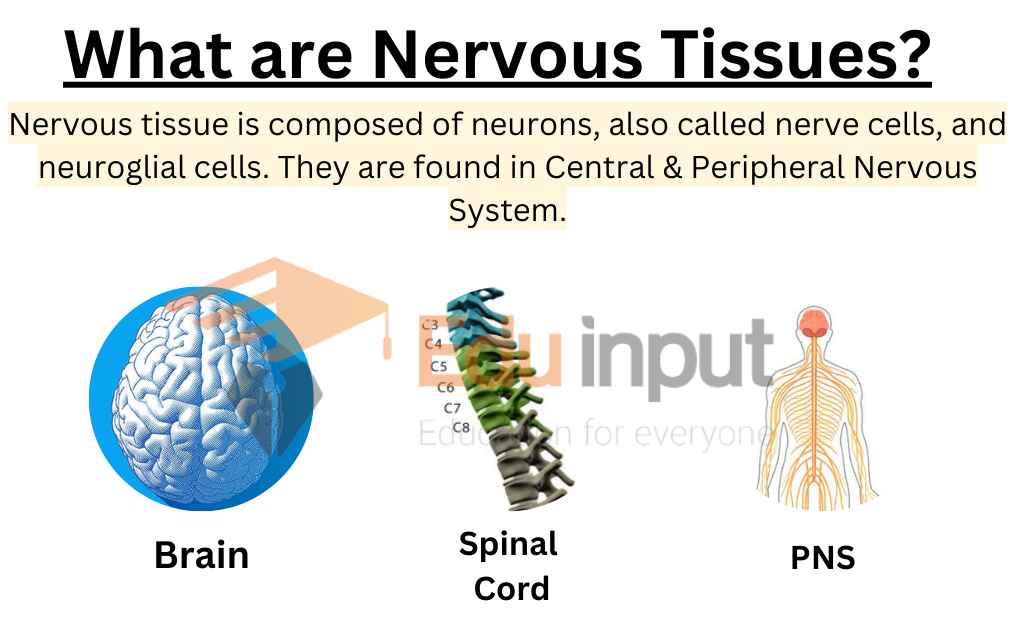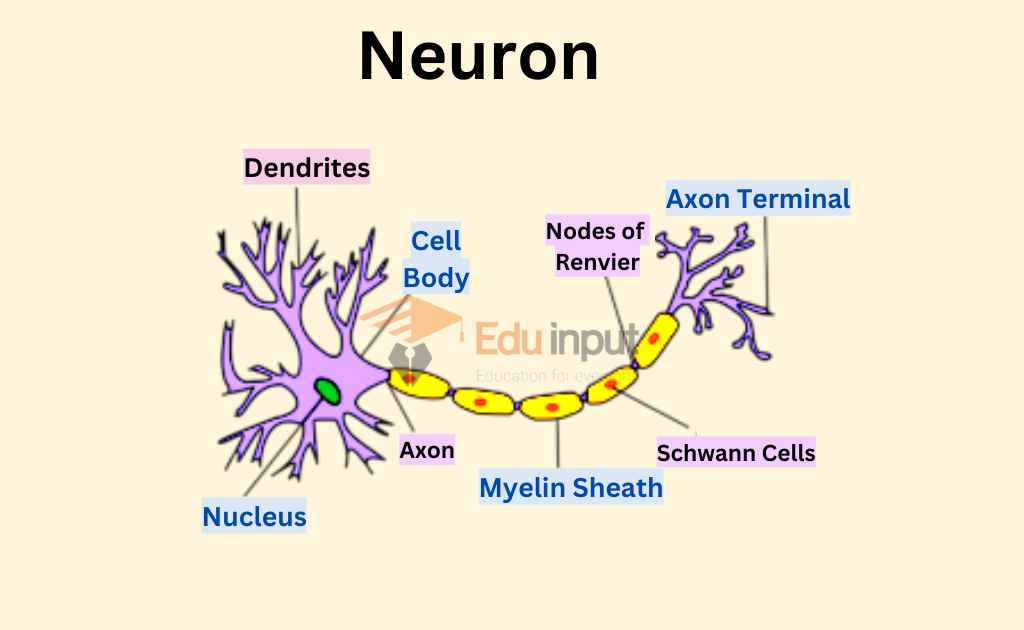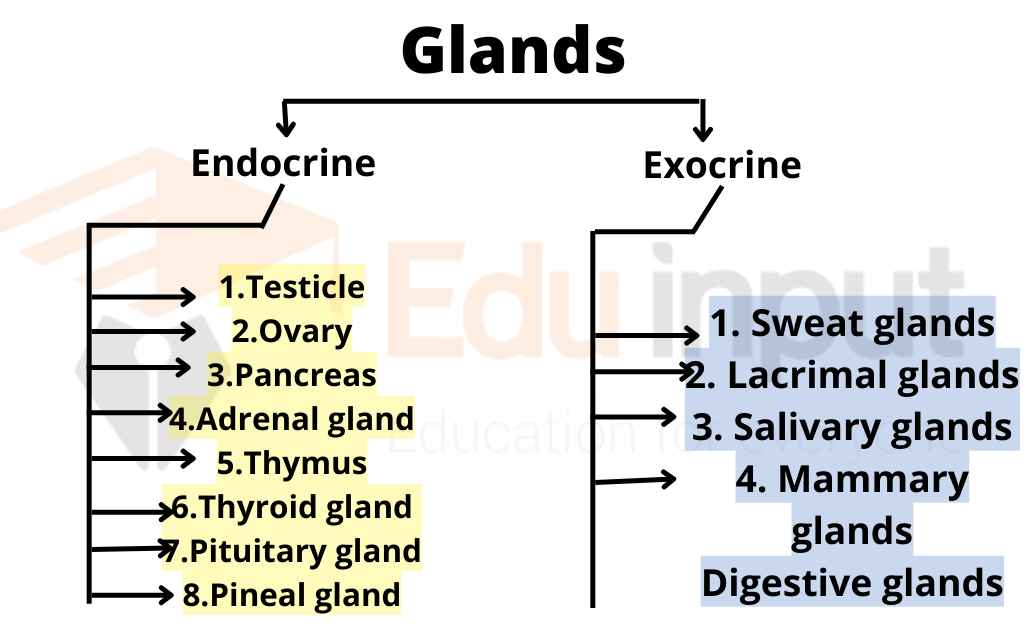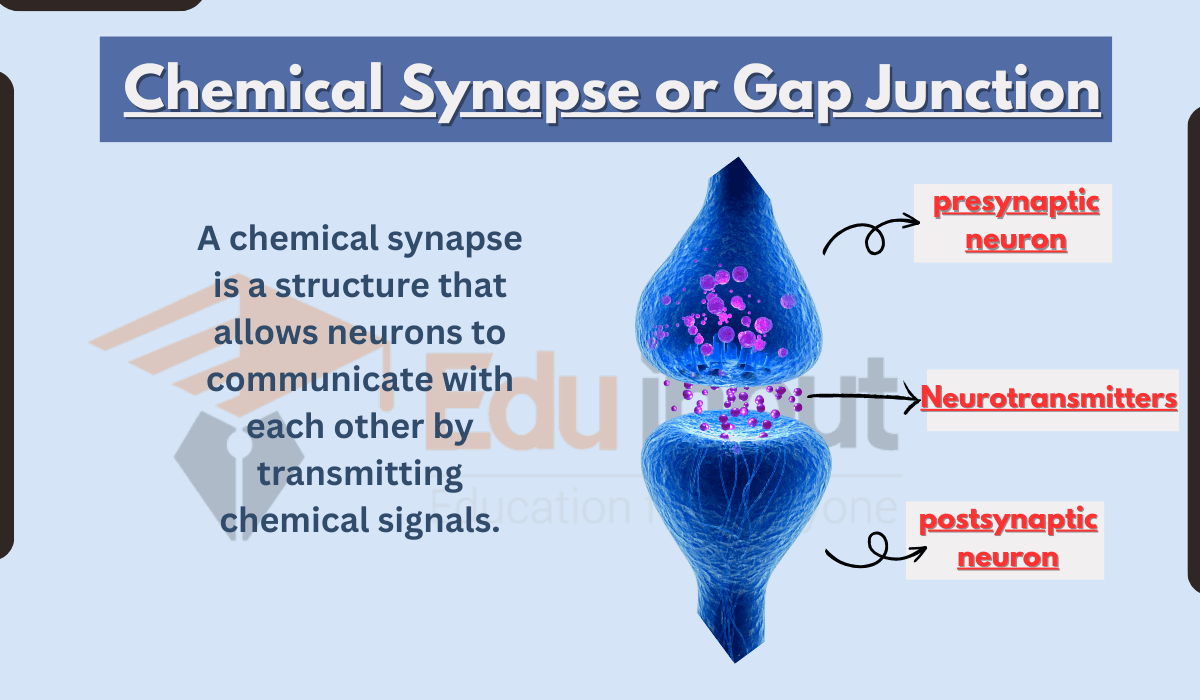Nervous Tissues-Characteristics, Types, And Functions
Nervous tissue refers to the cell groups present in the nervous system. They are responsible for controlling bodily movements and transmitting signals to and from various parts of the body. These tissues are primary components of the nervous system. They are composed of neurons and glial cells. The nervous tissue is found in the brain, spinal cord, and nerves, and is specialized for the rapid transmission of stimuli between different parts of the body.

What are Nervous Tissues?
Nervous tissues are also known as neural tissue. They are the primary component of the nervous system, that controls and regulates bodily functions and activity. It is composed of two parts: the central nervous system (CNS), and the peripheral nervous system (PNS). CNS includes the brain and spinal cord, and PNS includes the branching peripheral nerves.
Characteristics of Nervous Tissues
- They make up the central nervous system (CNS) and peripheral nervous system (PNS) of the nervous system.
- They consist of two distinct types of cells: neurons and glial cells.
- Neurons are the main component of nervous tissues, which is the primary functional unit of the nervous system responsible for transmitting nerve impulses.
- Glial cells provide support and nourishment to neurons, protect them from damage, and regulate their function.
- Nervous tissue is highly specialized and contains dendrites, a cell body, an axon, and nerve endings.
- Neurons secrete chemical neurotransmitters that stimulate other neurons in response to stimuli.
- The axonal terminals contain specialized structures called synapses that allow for communication between neurons.
- Nerve cells have a long lifespan and cannot be replaced (except in some areas of the brain where new neurons can be generated).
- Nervous tissue is responsible for sensory perception, motor coordination, and cognitive function.
- It is highly adaptable and can undergo structural and functional changes in response to experience or injury.
Location of Nervous Tissues
The nervous tissues are found throughout the body. They are found both in the central nervous system (CNS) and the peripheral nervous system (PNS). In the CNS, nervous tissues are located in the spinal cord and the brain. In the PNS, they are located in the nerves that run throughout the body. It includes the sensory nerves that allow us to feel touch, pressure, and pain, as well as the motor nerves that control muscle movements.
Types of Nervous Tissues
There are two types of nervous tissues:
- Neurons
- Glial cells
Neurons
Neurons are specialized cells present in the nervous system. They transmit information through the body by using electrochemical signals. They allow rapid communication and coordination of bodily functions. Neurons are one of the main types of cells found in nervous tissue.
A neuron consists of a cell body, dendrites, and an axon. The cell body contains the nucleus and other organelles, while dendrites receive signals from other neurons. The axon carries nerve impulses away from the cell body, terminating at specialized structures called synapses. At the synapse, chemical neurotransmitters are released, allowing the signals to be transmitted to other neurons or effector cells.
Neurons are highly specialized and amitotic, meaning they cannot divide and replace themselves like other cells in the body. This makes them vulnerable to damage, and destroyed neurons cannot be replaced. However, neurons are also highly plastic, meaning they can change and reorganize in response to experience or injury.
- Sensory neurons are also called afferent neurons. They transmit information from the peripheral nervous system (PNS) to the central nervous system (CNS). Different types of sensory neurons can detect temperature, pressure, and light.
- Motor neurons also known as efferent neurons, send signals from the CNS to the PNS, providing information to sensory neurons to initiate muscle movement and other bodily functions.
- Interneurons act as connectors between sensory and motor neurons in the brain and spinal cord, forming neural circuits. They are involved in reflex actions and higher brain functions, such as decision-making.

Neuroglial Cells
Neuroglia, or glial cells, are non-neuronal cells. They provide support and protection to neurons. Unlike neurons, neuroglia do not send electrochemical messages, but they play an essential role in creating a healthy environment for neurons to function optimally. They provide nourishment and support to neurons and help protect them from damage.
Neuroglia cells are far more numerous than neurons, and unlike neurons, they are capable of mitosis, meaning they can divide and replicate themselves. This allows them to repair and regenerate damaged neural tissue. Neuroglia cells come in several types, including astrocytes, oligodendrocytes, and microglia, each with its unique function in supporting neural function.
- Astroglial cells, or astrocytes, provide nutrients to neurons, maintain ion balance, and remove excess neurotransmitters.
- Ependymal cells form a cerebrospinal fluid and help circulate it in the CNS.
- Oligodendrocytes provide physical support to neurons and form a myelin sheath around some neurons in the CNS.
- Schwann cells form myelin sheaths around some neurons in the PNS, allowing for faster electrical impulse transmission.
- Microglial cells protect against disease in the CNS through phagocytosis and can promote neuron regrowth.

Functions of Nervous Tissue
Nervous tissues perform the following important functions in an animal’s body:
- Coordinates information from all areas of the body and sends nerve impulses that control bodily movements
- It connects the CNS to the rest of the body and is directly responsible for controlling the movements of specific body parts
- SNS activates during a fight-or-flight response and affects different parts of the body (dilating pupils, inhibiting digestion, and increasing heart rate)
- PNS activates during rest time and affects different parts of the body such as stimulating digestion and decreasing heart rate
- The enteric nervous system controls the gastrointestinal tract (digestive tract)
- The Autonomic Nervous System regulates activities that occur unconsciously
- The somatic nervous system controls voluntary body movements
- Conducts electric signals across tissue to form the communication network of the nervous system
- Grey matter in the CNS plays important role in information processing
- White matter in the CNS connects and facilitates nerve impulse between grey matter areas
- Ganglion tissue in the PNS contains relay points for nerve tissue impulses
- Nerve tissue in the PNS carries action potential nerve impulses.
Latest Research About Nervous Tissues
- Scientists used pre- and post-electrospinning plasma treatments to create improved PLA/PAni nanofiber scaffolds for nerve tissue engineering. The approach enhances cell adhesion and dispersion, and the presence of PAni promotes neuronal cell growth. [1]
- Scientists constructed a 3D model of the lumbar spine to measure the position relation between nerve tissue and bony structure in decompression surgery. Important localization markers were identified, and successful operations were performed with improved patient outcomes. [2]
- Scientists discuss the challenges and strategies for tissue engineering in the peripheral and central nervous systems, including the importance of natural structure and animal models. Neurite outgrowth and nerve regeneration have been a focus, while neuroprotection and cellular reconstitution have had limited application. [3]
FAQs
Where is nervous tissue found?
Nervous tissue are found in your brain, spinal cord, and nerves.

 written by
written by 



Leave a Reply